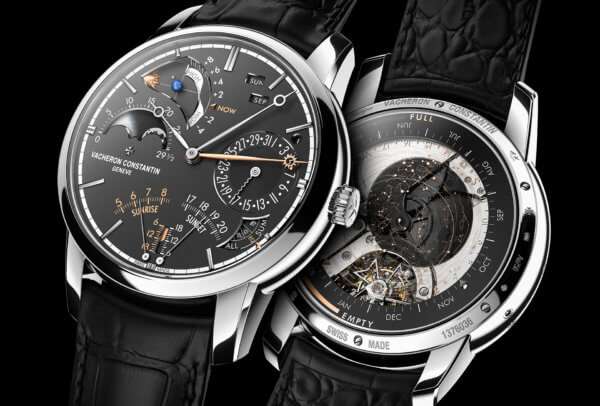A date with Vacheron Constantin calendars

It should have been a fairly ordinary visit to the Manufacture to see the latest Vacheron Constantin Patrimony perpetual calendar ultra-thin with blue dial - a fairly predictable addition to the range given the wave of blue that has washed over the various models in the Patrimony line these past months The weekend prior to our rendezvous coincided with the Spring auction session in Geneva which included, at Phillips, none other than the Don Pancho, made by Vacheron Constantin in the 1930s and unanimously considered by collectors as a legend among watches History tells us that in December 1935, Vacheron Constantin received a letter from Brooking, a retailer in Madrid, Spain, requesting a one-off complicated wristwatch for a client, Francisco Martinez Llano, who lived in Chile.
In producing this unique watch, Vacheron Constantin worked with the finest craftsmen in the Vallée de Joux: Paul Nicole for the repeating mechanism and Victorin Piguet for the perpetual calendar - converted to a simple calendar at the client's request so as not to "Overload" the dial Throughout an entire century, Vacheron Constantin developed its expertise in calendar mechanisms and more generally grand complications in pocket watches, reaching an apogee in the 1920s and 1930s with creations such as the spectacular timepiece presented to King Fuad I of Egypt in 1929, comprising a chronograph, a perpetual calendar and a minute repeater with petite and grande sonnerie The company notes, "The perpetual calendar has been part of the Patrimony, Traditionnelle and Overseas collections, and is also integrated into the grande complication mechanisms which remain a longstanding tradition at Vacheron Constantin.
In recent years, the Manufacture has distinguished itself with watches whose complexity represents an art in its own right." Mission accomplished with the Traditionnelle Twin Beat, the first Vacheron Constantin watch with an integrated perpetual calendar. . Source